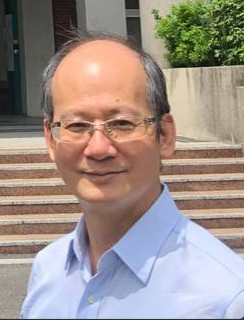Keynote Speaker

Distinguished Prof. Chih-Huang Weng
Chairman of Department of Civil Engineering, I-Shou UniversitySpeech Title: Inactivation of bacteria by heated oyster-shell powder
Abstract: With the escalating yield, oyster shell waste has become a greater environmental problem impacting shorelines and fisheries worldwide. The oyster shell is a residue composed of more than 95% calcium carbonate, which can be reused as a raw material for creating multiple values, such as blended cement, concrete ingredients, anti-mold paint, soil conditioner, functional fabrics, and pharmaceutical excipients. Turning the oyster shells into a valuable biomass disinfectant material would be a win-win strategy, providing a cost-effective material source and alleviating the environmental issue. Bacterial infection and subsequent disinfection of microorganisms are ongoing issues around the world. Bio-calcium oxide derived from heated oyster shell (HOS) waste products has been shown to be an effective disinfectant. It has the advantage of marketing waste materials that would otherwise contribute to environmental problems. This speech will briefly review the circular use of oyster shells and then concentrate more on the mode of inactivation of bacteria by HOS. Specifically, the use of fluorescence microscopy (FM), transmission electron microscopy (TEM), atomic force microscopy (AFM), and electron spin resonance (ESR) spectrometer techniques in characterizing the mode of inactivation of bacteria via HOS, exemplified by S. aureus (gram-positive) and E. coli (gram-negative), one of the primary pathogens involved in nosocomial infections in medical institutions worldwide. This is the first work to provide insight into the three-dimensional morphology and biophysical properties of the inactivated S. aureus and E. coli cells via HOS. Therefore, this study provides a template for the early assessment of altered bacterial cell structure and cell membrane permeability using FM, TEM, and quantification of K+ that leaks from bacterial cells. The biophysical properties showing the damage to bacterial height, surface roughness, Derjaguin-Muller-Toporov (DMT) elastic modulus, and adhesion following HOS treatment are also elaborate. Noteworthy, the presence of singlet oxygen in HOS suspension altered bacterial cell permeability, leading to sustained inactivation. The HOS exhibited excellent disinfection capacity and achieved a 5-log-inactivation E. coli within 60 min with a dose of 0.2 g/L, superior to other shell-derived disinfectants. Overall, the cost-effective HOS disinfectant, derived from natural resources, has a high potential to be applied as a universal disinfectant and alleviate an aquaculture waste pollution problem.
Biography: Distinguished Professor Chih-Huang Weng is currently the Chairman of the Department of Civil Engineering at I-Shou University, Taiwan. He also served as Vice-President of North Kaohsiung Community University, Taiwan. He is serving as the Editor of Water (MDPI), Environmental Geochemistry and Health (Springer), and on the Editorial Board Panel Member of Coloration Technology (Wiley). He has also served as a Guest Editor of SCI journals, such as Agricultural Water Management (Elsevier), Environmental Science and Pollution Research (Springer), and Lecture Notes in Civil Engineering. He has also organized and chaired several international conferences. Professor Weng was listed in the World’s Top 2% of Scientists (Stanford University, 2021-2023). His main research interests focus on using advanced oxidation processes and adsorption to treat wastewater and bacteria inactivation, groundwater modeling, and application of electrokinetic technologies to soil remediation/sludge treatment/activated carbon regeneration.
